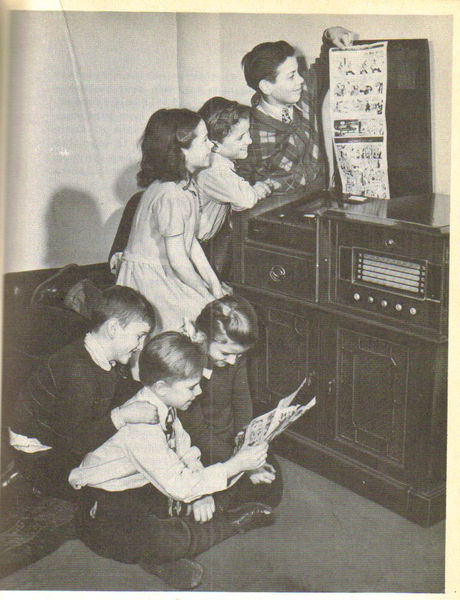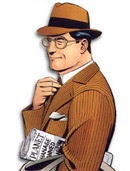
 Newspaper via Radio Facsimile although an intriguing and mystifying invention, the newspaper via radio facsimile never took off as a mainstream medium. The basic premise was that a newspaper would be printed via the facsimile during regularly scheduled radio broadcasts so that the audience would have a visual along with the auditory experience of the radio.
Newspaper via Radio Facsimile although an intriguing and mystifying invention, the newspaper via radio facsimile never took off as a mainstream medium. The basic premise was that a newspaper would be printed via the facsimile during regularly scheduled radio broadcasts so that the audience would have a visual along with the auditory experience of the radio.
Developed by John V L. Hogan on June 16, 1934, the facsimile system, and its utilization in the transmission of newspaper, was intended to broadcast a condensed version of a normal newspaper into the home. At the time there were no national newspapers that could be easily distributed into every household across the country, and it was hoped that the radio facsimile could doctor this issue. The facsimile receiver was similar in size to that of a record player, and it could be attached to any normal household radio. One of the initial demonstrations of the news via radio facsimile technology was conducted on April 17th, 1946, when it successfully printed a four-column newspaper at a rate of about 500 words a minute. The black and white transmission was completed with relative clarity onto a roll of paper at an approximate speed corresponding to a normal reading pace, or slightly faster to make up for illustrations.
There is some discrepancy as to the commercial cost of the radio facsimile machine and its accessories. In 1936, the necessary rolls of paper were deemed expensive, but according to an article in the New York Times, they only cost $1.00 each by 1946 ("Facsimile Paper 'Printed' By Radio"). Similarly, there are some opposing reports with regards to cost of the facsimile receiver. An article in the May 1939 edition of Radio-Craft Magazine listed the price as approximately $250 a piece. However, the price of a two-column facsimile receiver was listed at $75 a piece before the onset of World War II.
The FCC regulations established in the field of news transmission via Radio Facsimile stated that the entire facsimile edition of the newspaper was to be printed in completion within a standard 15-minute broadcast window, which would allow its delivery to coincide with regular news radio broadcasts. Such a formula ultimately broke down a typical broadcast into 28 inches a minute for four facsimile pages measuring 11.5 inches long and 8.2 inches wide. It seems likely that this final judgment regarding the most efficient and effective paper size directly influenced what is considered the standard size of paper today. [Click for MORE]
From Wikipedia
Hat tip / Miami Herald Alumni
Sphere: Related Content
 Hearst Corp. said its newspapers plan to hold back at least some content from their free Web sites, launching the publisher onto the vanguard of print media companies to begin charging for their digital news and information.
Hearst Corp. said its newspapers plan to hold back at least some content from their free Web sites, launching the publisher onto the vanguard of print media companies to begin charging for their digital news and information. 






























